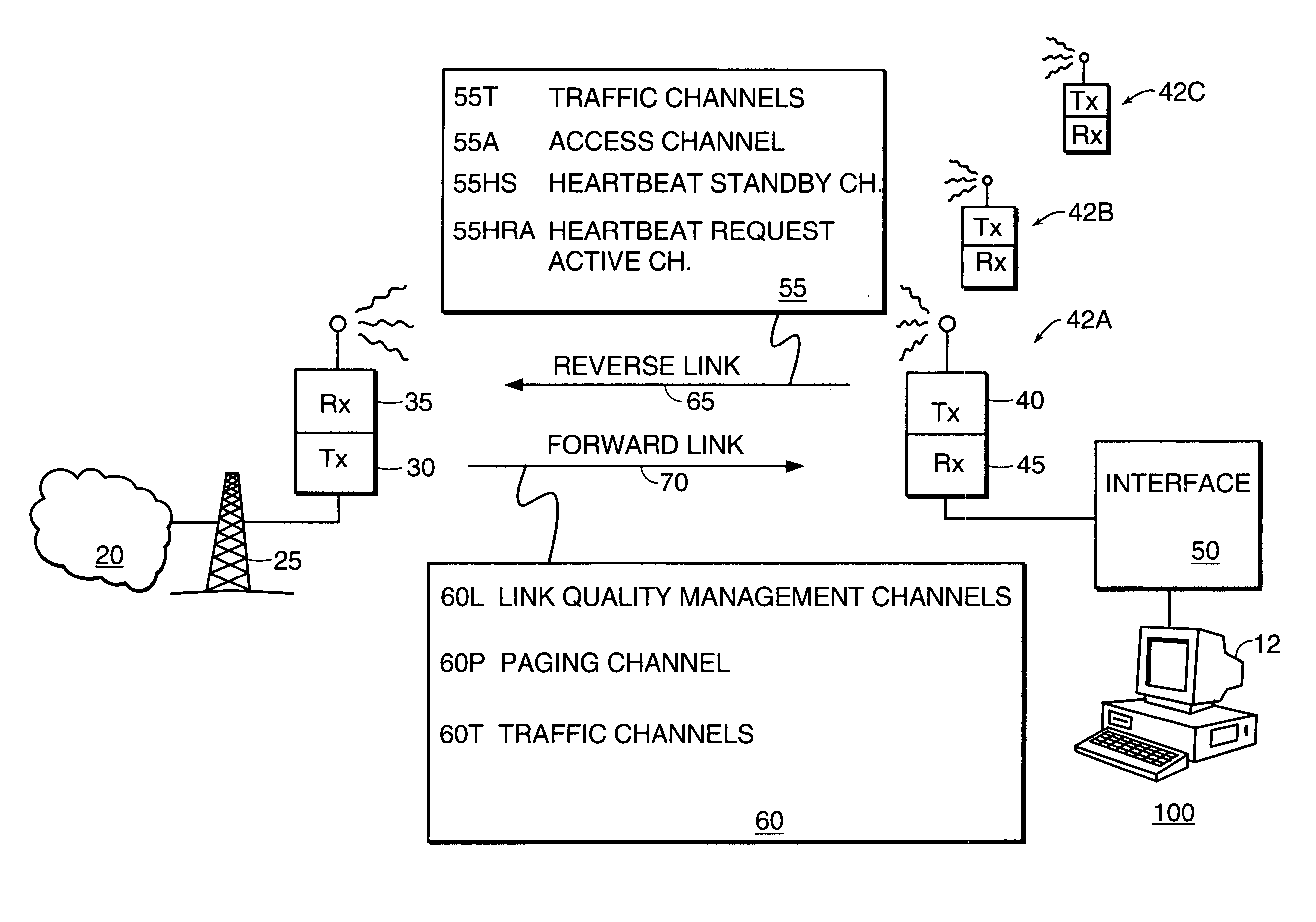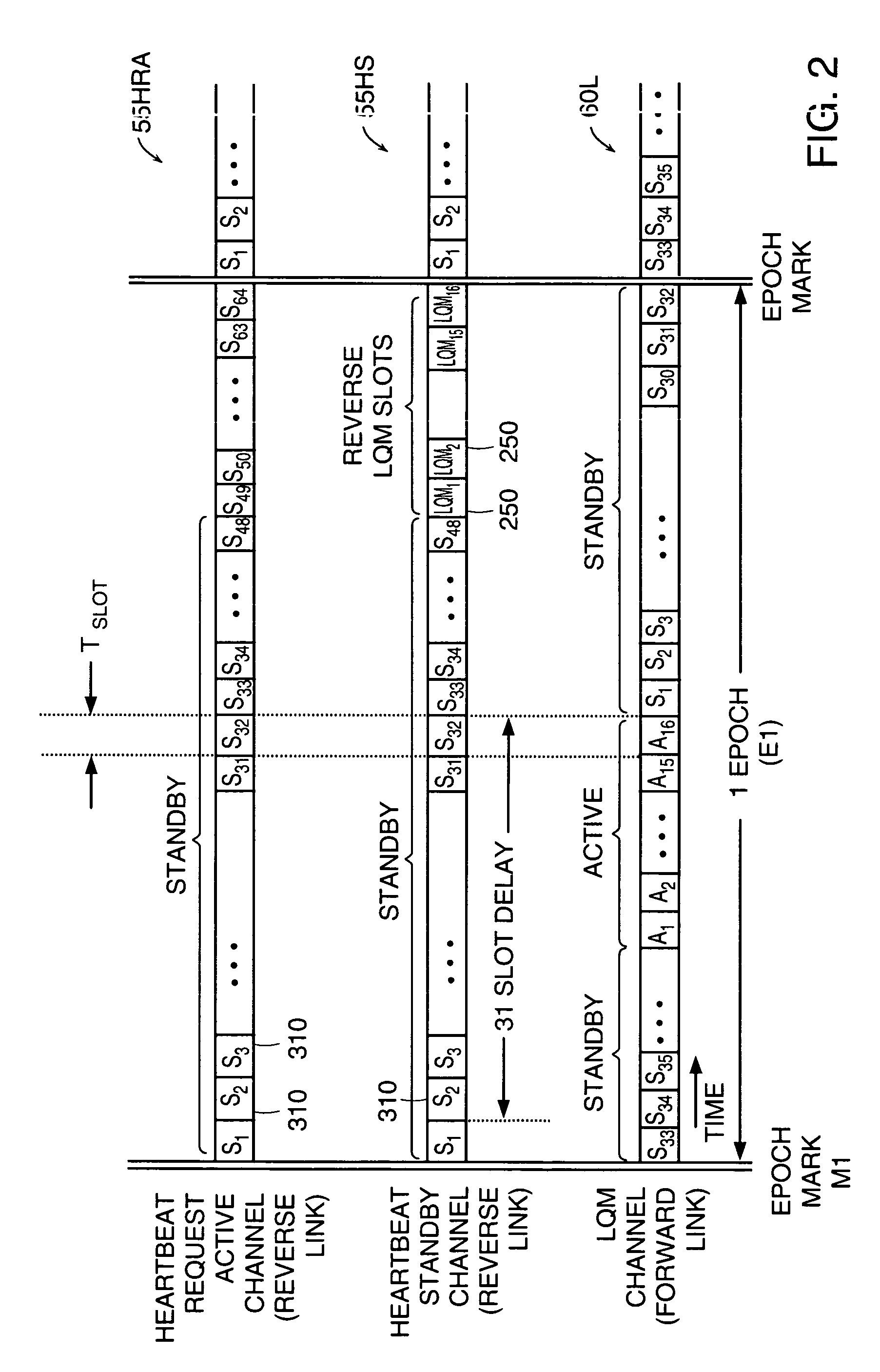Maintenance link using active/standby request channels
a technology of active/standby request and maintenance link, which is applied in the direction of synchronisation arrangement, electrical apparatus, radio transmission, etc., can solve the problems of low cost, low subscriber cost, and inability to adapt to the voice grade service available in most homes or offices, and achieve the effect of reducing co-channel interference and increasing potential throughpu
- Summary
- Abstract
- Description
- Claims
- Application Information
AI Technical Summary
Benefits of technology
Problems solved by technology
Method used
Image
Examples
Embodiment Construction
[0045]FIG. 1 is a diagram of a wireless communication system 100 according to the principles of the present invention. A base station 25 maintains wireless communication links with each of a plurality of field units 42A, 42B, 42C (collectively, field units 42) as shown. Such wireless links are established based upon assignment of resources on a forward link 70 and a reverse link 65 between the base station 25 and field units 42. Each link 65 or 70 is typically made up of several logical reverse link channels 55 and several logical forward link channels 60.
[0046] As shown, communication system 100 supports wireless communication between an interface 50 and network 20. Typically, network 20 is a Public Switched Telephone Network (PSTN) or computer network such as the Internet, internet or intranet. Interface 50 is preferably coupled to a digital processing device such as a portable computer 12, to provide wireless access to the network 20. Consequently, portable computer device 12 ha...
PUM
 Login to View More
Login to View More Abstract
Description
Claims
Application Information
 Login to View More
Login to View More - R&D
- Intellectual Property
- Life Sciences
- Materials
- Tech Scout
- Unparalleled Data Quality
- Higher Quality Content
- 60% Fewer Hallucinations
Browse by: Latest US Patents, China's latest patents, Technical Efficacy Thesaurus, Application Domain, Technology Topic, Popular Technical Reports.
© 2025 PatSnap. All rights reserved.Legal|Privacy policy|Modern Slavery Act Transparency Statement|Sitemap|About US| Contact US: help@patsnap.com



